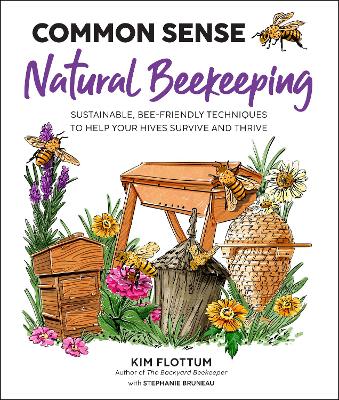Reviewed by annieb123 on
Common Sense Natural Beekeeping is a well written easy to understand guide to sustainable beekeeping by Kim Flottum. Released 30th Nov 2021 by Quarto on their Quarry imprint, it's 128 pages and is available in paperback format.
The author is an experienced beekeeper and former USDA researcher and this book is full of well thought out and sensible advice for sustainable and successful beekeeping. The book is divided into three main sections: an introduction which introduces the main concepts and biological evolution of bees along with the tools & supplies of the apiarist's toolbox,detailed housing needs and possibilities examined with regard to the needs and health of the *bees* and not necessarily prioritizing only the convenience of the beekeeper, a second section covering health and maintenance, and a third and final section covering husbandry practice and procedures.
The photography throughout is in color and is very clear and professionally rendered. The photo captions are easy to understand and relevant.
Beekeeping is such a rewarding and fascinating hobby and improving the health of our own biodiverse environment aids everyone from locally to globally. This is a short but information dense and layman accessible guide. It would make a good selection for public or school library use, home/smallhold library, makers groups, allotment and community garden groups, and similar.
Four and a half stars. Very well done.
Disclosure: I received an ARC at no cost from the author/publisher for review purposes.
Reading updates
- Started reading
- 25 December, 2021: Finished reading
- 25 December, 2021: Reviewed
